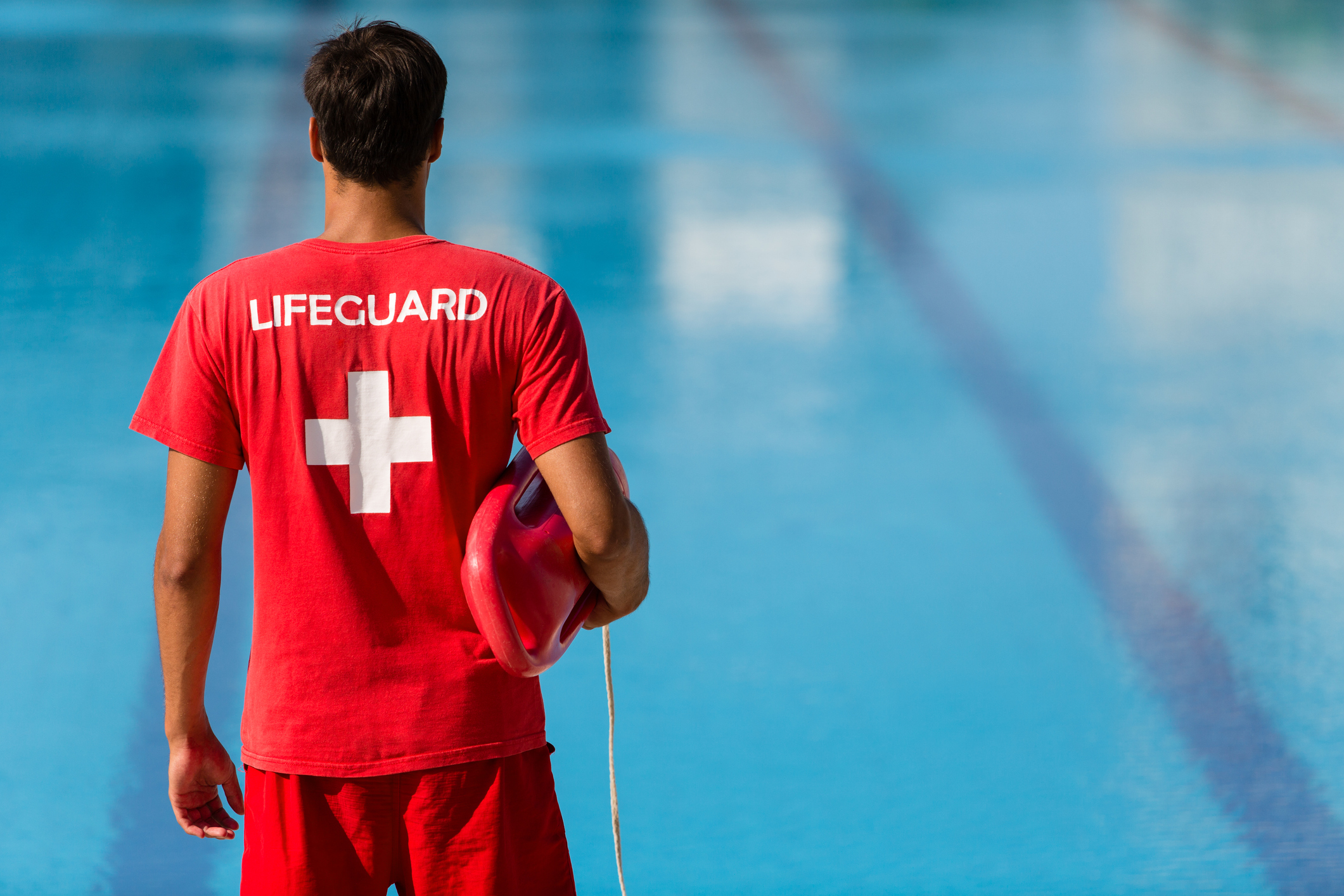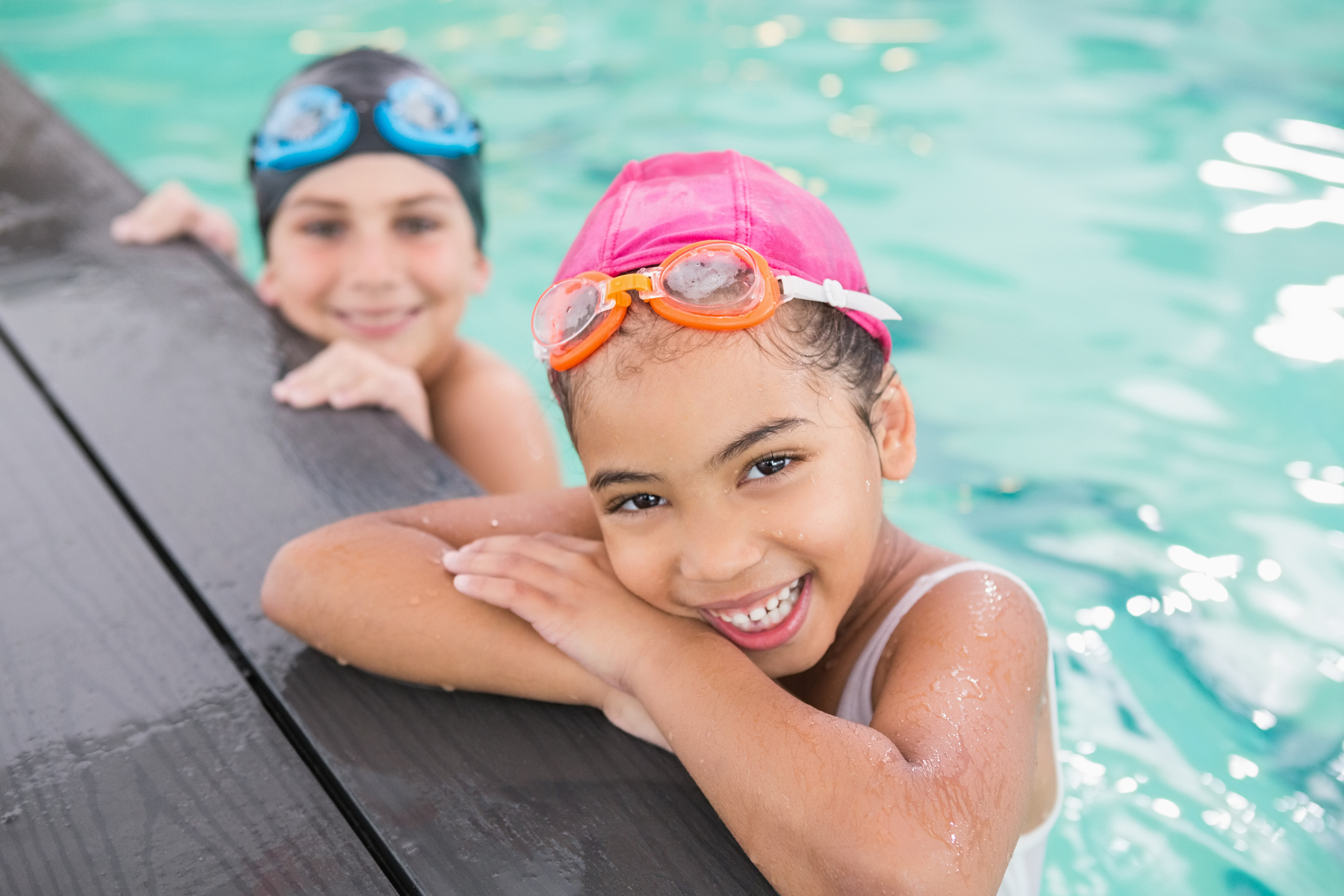In the U.S., drowning is the leading cause of death of children ages 1-4 and the second cause of unintentional injury death for children ages 5 to 14. Most drowning deaths of younger children occur in swimming pools. Black children ages 10-14 drown at higher rates than white children and are more likely to drown in public pools.
Having lifeguards present at public and community swimming pools is an important layer of protection in drowning prevention. However, human limitations in perception (seeing/understanding) and cognition (thinking/attending) challenge the ability of lifeguards to detect signs of swimming distress and drowning.
UI Professor Cathleen Moore, who co-leads the UI Visual Perception Research Group, received a UI Injury Prevention Research Center pilot grant in 2022 to develop and validate a realistic virtual reality tool for studying a swimming pool lifeguarding environment. She hopes this computer-generated tool will help train lifeguards to better detect drowning by allowing them to interact with simulated swimming pool scenarios.
“Anything that can be done to simplify the surveillance task and to make lifeguards, as well as aquatics facilities, aware of the vulnerabilities can hopefully reduce the number of drownings that occur each year at guarded facilities,” she said.

Moore has served as an expert witness on numerous drowning cases in which lifeguards were on duty and missed the signs of distress. In 2010 in Pella Iowa, two teen boys drowned in a community pool with many lifeguards present.
“These cases are heartbreaking from every point of view. Family and friends of the person who drowned are of course devastated, she said. “The lifeguards, who are typically young adults in their teens or early 20s, are also devastated, struggling to understand what happened. The lifeguards consistently report, ‘I don’t know how I missed it!’”
Here, Moore talks about the challenges lifeguards face in detecting drowning and how her research in virtual reality environments can help.
Q & A: Why is there a need to better train lifeguards to detect early signs of distress while swimming?
It often surprises people to learn that swimmers in distress are often detected by other swimmers or members of the public before they are detected by lifeguards who are focused on looking for just such signs. This is not attributable to negligence. Most lifeguards are well-trained and conscientious in their efforts to monitor their zones of responsibility. The problem is that human beings can only take in and make sense of so much information at any given moment.
I’m on a mission to (1) provide some concrete answers that will help lifeguards to understand how sometimes missing things is part of being human, and (2) understand what the specific processing vulnerabilities are in lifeguarding in particular and compensate for them through improved training, facility procedures, or supplemental automated surveillance systems.
Q & A: What are some challenges of human perception and cognition and environmental factors that lifeguards face?
Perception is information processing, and humans are fundamentally limited in how much information we can process. Right now, for example, you are reading this text and probably not noticing what the chair feels like under you bum, or what objects are in the room behind the device you are reading from, let alone the conversation that folks next you might be having or what you might have for dinner tonight. You might be noticing some of those things now that your attention has been drawn to them, but as consequence your reading of this text was most likely slowed or less effective.
Limited capacity processing is a fundamental characteristic of human perception and cognition, and it impacts how well lifeguards can monitor their zones of responsibility. While attending to a child who goes under the water to make sure that he comes up again—something that lifeguards must do—a distressed swimmer who is in the same field of view can be missed by the lifeguard.
Every year at pools, water parks and beaches across the country, lifeguards fail to detect swimmers in distress and report the same thing: “I don’t know how I missed it.” Typically, they did not miss it because of negligence or poor training; they missed it because of processing capacity limitations of human perception and cognition.

Q & A: How can a virtual reality swimming pool environment advance research and help train lifeguards?
A challenge to studying a problem like surveillance failures in lifeguarding is finding an effective balance between external validity of real-world conditions (Does this mimic real lifeguarding settings?) and the kind of experimental control (e.g., testing different lifeguarding scenarios) needed to identify and target the specific processes contributing to the problem of detecting drowning. Actual lifeguard settings and drownings vary a lot and are complex. In addition, drowning scenarios are not ethical to test in the real world.
At the same time, simplified and controllable tasks intended to model aspects of lifeguard surveillance in the lab (e.g., watch a field of moving disks on a computer monitor and report when any of them change from black to gray) are insufficiently rich to reproduce the real-world processing demands of lifeguarding.
By developing a virtual reality aquatics environment that simulates some of the immersive aspects of the surveillance component of lifeguarding, while allowing the control and manipulation of relevant factors (e.g., the presence, type, and timing of drowning behaviors), we hope to identify specific sources of failures in lifeguard surveillance and target those for training and mitigation.
Q & A: What are your next plans for research in this area?
My team and I have successfully applied for a two-year pilot grant from the National Institutes of Health (NIH) to continue the foundational work that was begun through the UI IPRC pilot program. Validation of the environment (how suitable or effective it is) is ongoing. Upon success of this first stage, we will apply for longer-term funding to test alternative training programs, and hopefully develop customized environments that simulate real pools, for example, the City Park pool in Iowa City or parts of the water park at Adventure Land in Des Moines.
Published May 13, 2024
Some resources:
Prevention of drowning (American Academy of Pediatrics guidelines)
American Academy of Pediatrics Pool and Swimming Safety Tips for Families (video)
Swimming pool safety (Prevent Child Injury)
Drowning prevention (Child Safety Network)
Open water safety checklist (Safe Kids Worldwide)
American Lifeguard Association
Pool and outdoor water safety (UI Stead Family Children’s Hospital
Rural water safety (National Children’s Center for Rural and Agricultural Health and Safety)
Drowning prevention and water safety (Harborview Injury Prevention Research Center, WA)
Drowning (World Health Organization)
International Life Saving Federation
Drowning is the No. 1 killer of young children. Efforts to fix it are lagging (NY Times)
How to take action in a drowning incident (Harborview Injury Prevention & Research Center)